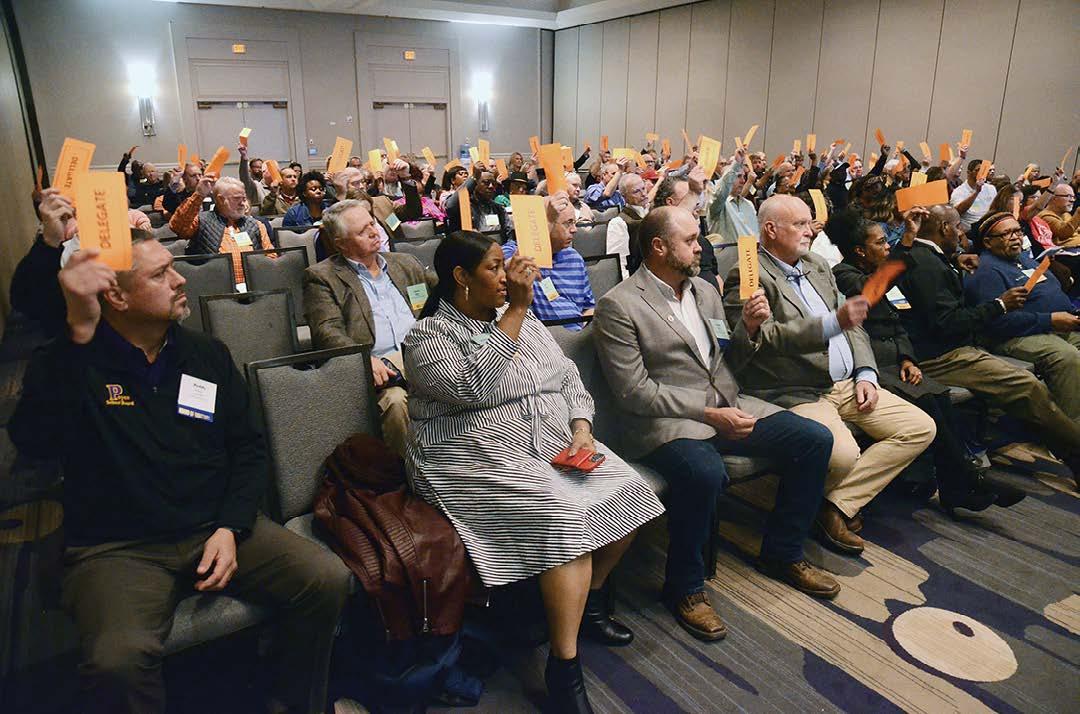
6 minute read
Conference: Less news, great info
from March 2023
by ASBA
The 2022 Annual Conference lacked the drama of the previous year’s when ASBA left the NSBA for COSSBA. But sessions covered a lot of important topics, including communications and engagement.
The 2022 Annual Conference was less newsworthy than last year’s, and that’s a good thing.
The conference had 721 attendees, which was enough to force a late shift from upstairs at the Statehouse Convention Center to a larger downstairs area. The Delegate Assembly featured the usual highlights from the past year. One hundred percent of Arkansas school districts are members of ASBA, one of the few state associations able to make that claim. ASBA’s Worker’s Compensation Program has 256 members, including all districts, while 252 members, including every district, are enrolled in ASBA’s
Model Policy Service. The Errors and Admissions Program has 212 members. The Risk Management Program increased to 179.
The positive but rather uneventful report came at the beginning of the Delegate Assembly, where members unanimously cast their votes.
It contrasted with the 2021 Delegate Assembly, when attendees voted to join other states in leaving the National School Boards Association because of concerns over its governance, communications, fiscal solidarity and value of membership, and instead move to the newly formed Consortium of State School Boards Association. That particular vote was almost unanimous and much more momentous.
As in every Annual Conference, outstanding school board members were honored, including 40-year veterans Curley Jackson of Drew Central, Clint
Hull of Pottsville, and Max Ray Shrable of Viola. Watson Chapel School Board member Sandra Boone was honored with ASBA’s Dr. Daniel L. Pilkinton Award after spending 32 years as an educator and 20 years as a school board member. A special recognition was given to Carolyn McFatridge in remembrance of her husband, Mickey, a longtime educator and ASBA staff member who died last year. Dr. Tony Prothro, ASBA executive director, said Mickey was “a man of character, a man of integrity.” Even though Carolyn was not an ASBA employee, she was often at his side.
“These two people are the epitome of what a spousal relationship should look like,” Prothro said.
A common subject among the breakout sessions was communication and engagement. In one early bird session, Beebe Superintendent Dr. Chris Nail,
School Board President Jason Smith, and Jessica Prothro, assistant director – communications and instructional technology, described communications between the superintendent, school board, staff and community. The three said transparency builds trust, that everyone being on the same page helps the district achieve its goals, and that the district must tell its story because otherwise someone else will.



Communications at Beebe District-board communications are a high priority at Beebe. If anything, Nail tries to over-communicate with board members. Every Friday at 7 a.m., the district sends out a board memo that describes issues administrators are dealing with, including Freedom of Information Act requests. The memo keeps board members informed in case they are approached in the community. Nail contacts board members whenever they are likely to get calls from patrons. When a bus overturned with no students inside, he quickly texted his board members. Smith said it saved Nail the time he would have spent responding to school board members’ questions. When three new board members were elected after a contentious election, the district had a full-day onboarding session with all five members with help from ASBA and a district team. It helped the new board members better understand their roles before their first meeting, which went smoothly.
The district takes particular pride in its board packet preparation process. The day after a board meeting, Nail starts forming the next meeting’s packet. He tries to consider what is the easiest way for board members to digest information. Every recommendation must have a rationale. He wants to ensure board members have seven days to look at their packet. It’s posted online complete with the agenda, superintendent’s comments and hyperlinks. Jessica Prothro said preparation for the board meeting lasts all day. Everything is set up so the meeting doesn’t feel rushed.
Continued on page 21
BOARDS OF EXCELLENCE. North Little Rock, left, and Cross County received ASBA’s School Board of Excellence Awards at the Annual Conference. Recipients must have documented evidence in eight criteria: supporting student achievement; supporting educational improvement projects; commitment to a code of ethics; maintaining harmonious and supportive relationships among board members and the superintendent; adhering to adopted policies; overseeing district finances consistent with the district’s strategic plan and policies; participating in improvement programs; and supporting public relations and community awareness efforts. Left photo, pictured from North Little Rock from left are Dr. Greg Pilewski, superintendent, and board members Valerie McLean, Cindy Temple, Dorothy Wiliams, Natalie Wankum, and Dr. Rochelle Redus. Not pictured are Angela Person-West and Tracy Steele. Right photo, pictured from Cross County from left are Superintendent Nathan Morris and school board members Dewayne Cameron, Shane Bell and Derek Wood. Not pictured are Ashley Armstrong, Joan Ball, Wade Halk and Craig Walker. Photos by Lifetouch.
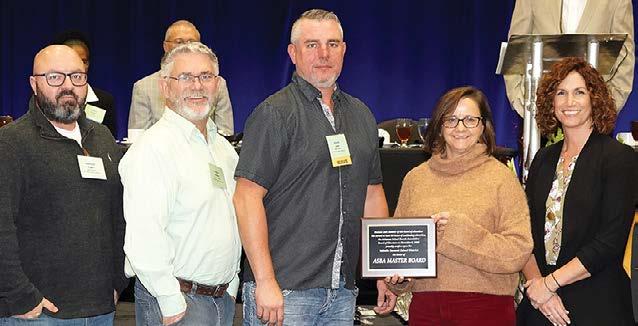
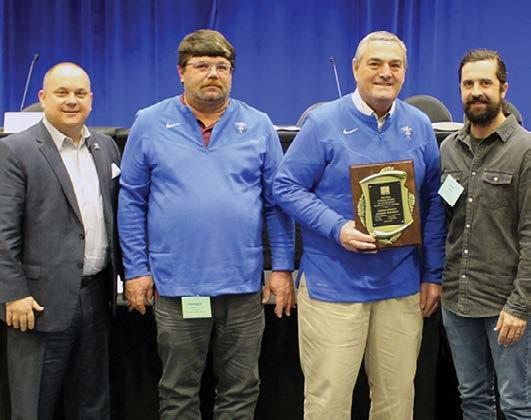
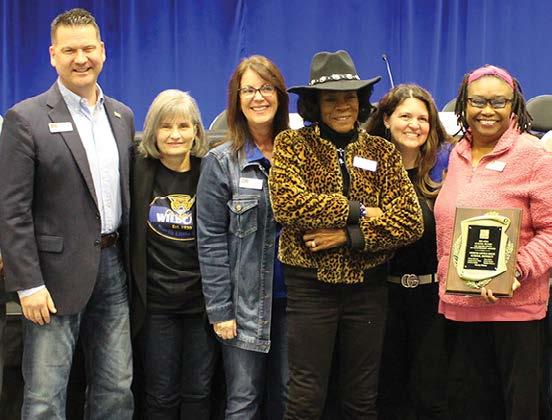
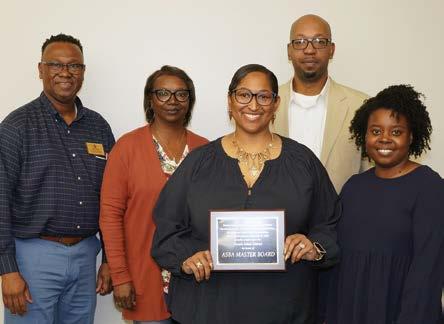
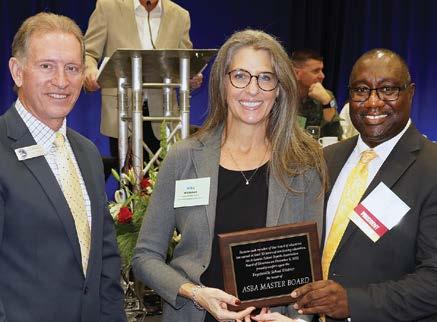
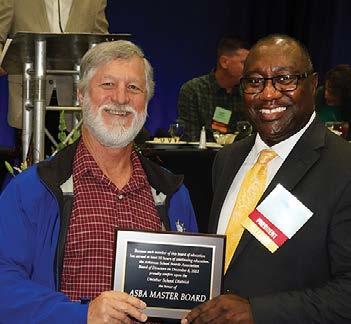
MASTER BOARD WINNERS. Five boards received Master Board awards after all of their members achieved at least 50 hours of professional development. Top left photo are Yellville Summitt School Board members, from left, Nathan Rogers, Travis Doshier, Jason Jones, Robin Lee and Eleanor Davenport. Top right photo is the Osceola School Board. Pictured from left are Ollie Collins, Denise Williams, Kristain Dedmon, Torian Bell and Kristie Hopper. Not pictured are James Baker and Jacqueline Baker. Above left photo, Fayetteville School Board member Nika Waitsman stands with ASBA Executive Director Dr. Tony Prothro, left, and ASBA President William Campbell. Not pictured are board members Justin Eichmann, Tim Hudson, Katrina Osborne, Tracey Pomeroy, Keaton Smith and Megan Tullock. Middle photo, Decatur School Board member Ike Owens stands with Campbell. Not pictured are board members Kevin Smith, Amy Brooks, Karen Davis and Darleen Holly. Right photo, Clarksville School Board member Craig Frost poses with Campbell. Other members of the board are Clay Austin, Bobby Freeman, Joanie Liles, and Jamie Payne. Photos by Lifetouch.
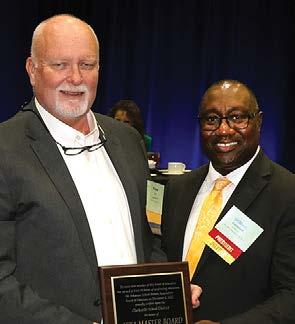
Communication with staff is also important. A board meeting review is sent to staff and media at 9 a.m. the day after the meeting so staff members know exactly what happened.
Smith said it’s worth the effort.
“You know that not one thing goes on in a school district without what? A board meeting,” he said. “Not one thing happens at a school district. Kids don’t get fed. They don’t get delivered to school. You don’t have a superintendent. You don’t have teacher contracts. You don’t have anything until you have a board meeting. The board meeting is the foundation of every school district in this room. And I’ll be honest with you, I don’t care if we have three people fulltime working on the board packet for an entire month. I would do that to get the production and the efficiency that we get out of the way they handle the board meetings.”
Likewise, the board must communicate with the superintendent. Smith said he and Nail talk at least once a day, and not always about school business. He warned that the talent pool of available superintendents is shallow, so board members should try to keep a good one if they have one.
The three also discussed communicating with the community. Prothro said the district must try to control the narrative and drive out the negative with the positive. Sharing the truth helps stop the spread of misinformation. Nail said districts must consider how community members want to be communicated with. His community members want a text message sent to their phone with an active link, and they don’t want videos longer than three minutes. Facebook, Instagram and Twitter can reach people in the district and be measured. Prothro advised schools to be as transparent as possible and be responsive on Facebook, but if a user is hostile, don’t engage with them. Smith said he often encourages community members to use the chain of command. Board members feel a burden to help everyone that calls them, but that’s not their role. An effective explanation he often uses is, “That’s not really what we do.”
Engaging families and communities was the subject of a breakout session led by Chelsey Moore, coordinator of engagement with the Division of Elementary and Secondary Education, and Freddie Scott, operations manager.
The two explained that engagement is required by both state and federal laws and by State Board of Education rules. By Arkansas law, every school district must have a school engagement facilitator who helps organize meaningful training for staff and parents, promotes and encourages a welcoming atmosphere, and tries to ensure parental participation is recognized as an asset. Each Aug. 1, each district is required to submit to the state a written family and community engagement plan. Schools
Continued on page 22









